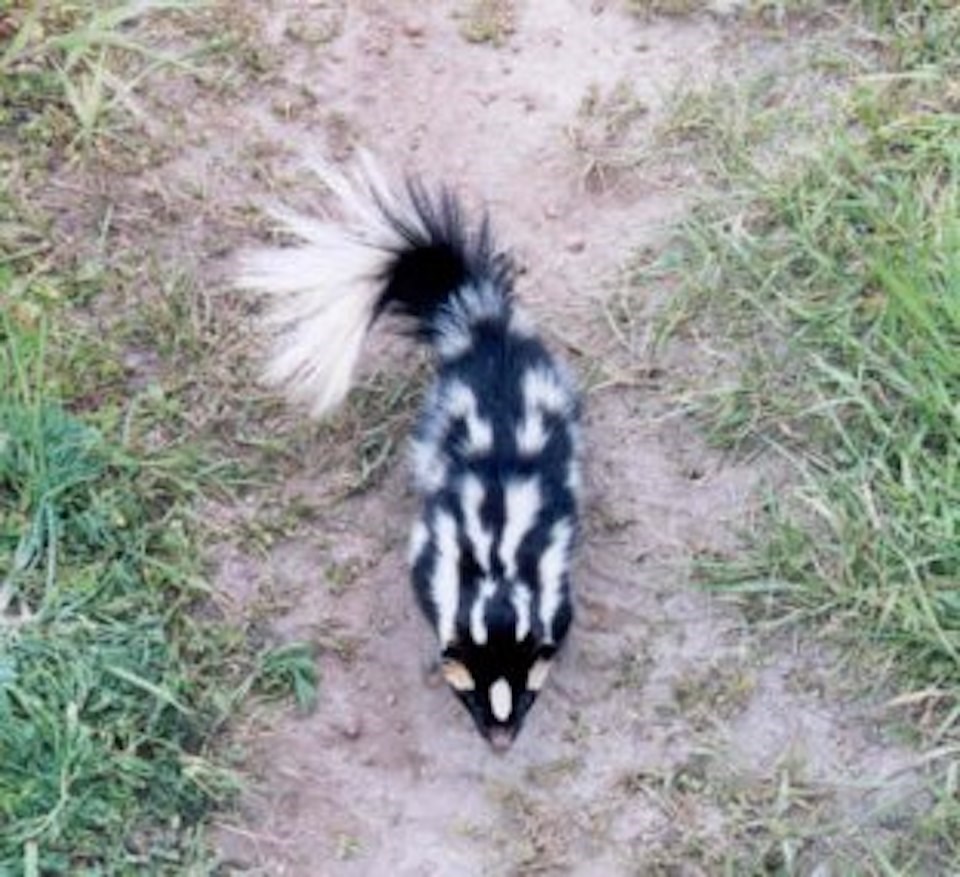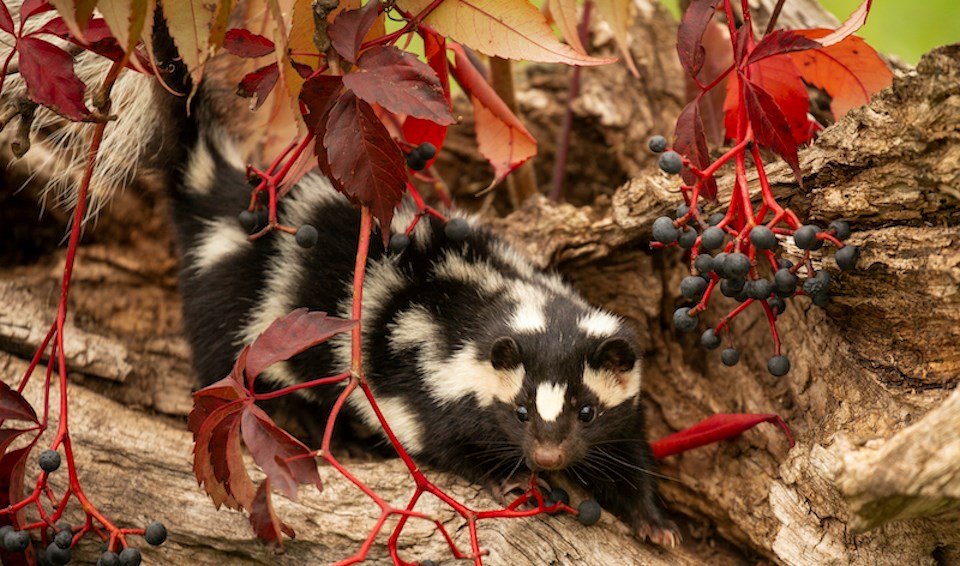Skunks are one of the most adorable, albeit stinky, commonly-seen critters roaming around Metro Vancouver.
The small omnivorous mammals tend to live in places near humans and are easily identified by their distinctive black-and-white striped fur. But many people don't realize that there are actually two species of skunk in B.C.
While the Striped Skunk (Mephitis mephitis) is the one most commonly observed in the Lower Mainland, locals may also come across the Western Spotted Skunk (Spilogale gracilis).
Spotted skunks are rather elusive creatures, and "very little is known about them in B.C.," Vanessa Isnardy, a program manager for WildSafeBC, told V.I.A.
"They are much more slender and smaller than striped skunks and, as per their names, have white spots rather than white stripes. They are more nocturnal than striped skunks and therefore are likely to be observed less often."
In addition to vertical stripes or spots on the back of their bodies, spotted skunks also have a bushy white tip on the end of their tails.

Where do spotted skunks live?
The spotted critters also seem to be less comfortable living in urban environments than their striped relatives, meaning that people are less likely to encounter them near their homes, Isnardy described.
The spotted forest-dwellers live in southwestern B.C. on the mainland but their range extends down across the border as far down as Mexico, according to E-Fauna BC: Electronic Atlas of the Wildlife of British Columbia.
Confirmed sightings of spotted skunks include the "Fraser Valley (east to Cultus Lake), Sunshine Coast, Vancouver, North Vancouver, Burnaby, and Pitt Meadows."
When they feel threatened, the spotted animals will stamp their forefeet and "perform a bit of a handstand and point their tails back towards the aggressor," Isnardy explained.
"While they can spray this way, they tend to come back on all fours and have both their tail and face pointed at the potential threat."
What do skunks eat?
While the animals aren't a keystone species, they play a role as "both an omnivore and prey," Isnardy added. They eat a wide variety of foods from grains, berries, insects, eggs, small mammals and birds, and even carrion. They may even help manage rodent populations.
Since they are rarely spotted in the wild, any sightings should be reported to the iNaturalist animal and plant tracking platform so that the collective can track the population of the species in the region.
Isnardy said people should even take photos of deceased spotted skunks (such as ones struck by vehicles) to contribute to the database.
Skunks are protected under the BC Wildlife Act. WildSafeBC recommends exploring options that reduce conflict if you have troubles with the animals on your property.
Have a look at an interactive map of spotted skunk sightings and preserved specimens in the E-Fauna BC: Electronic Atlas of the Wildlife of British Columbia.



